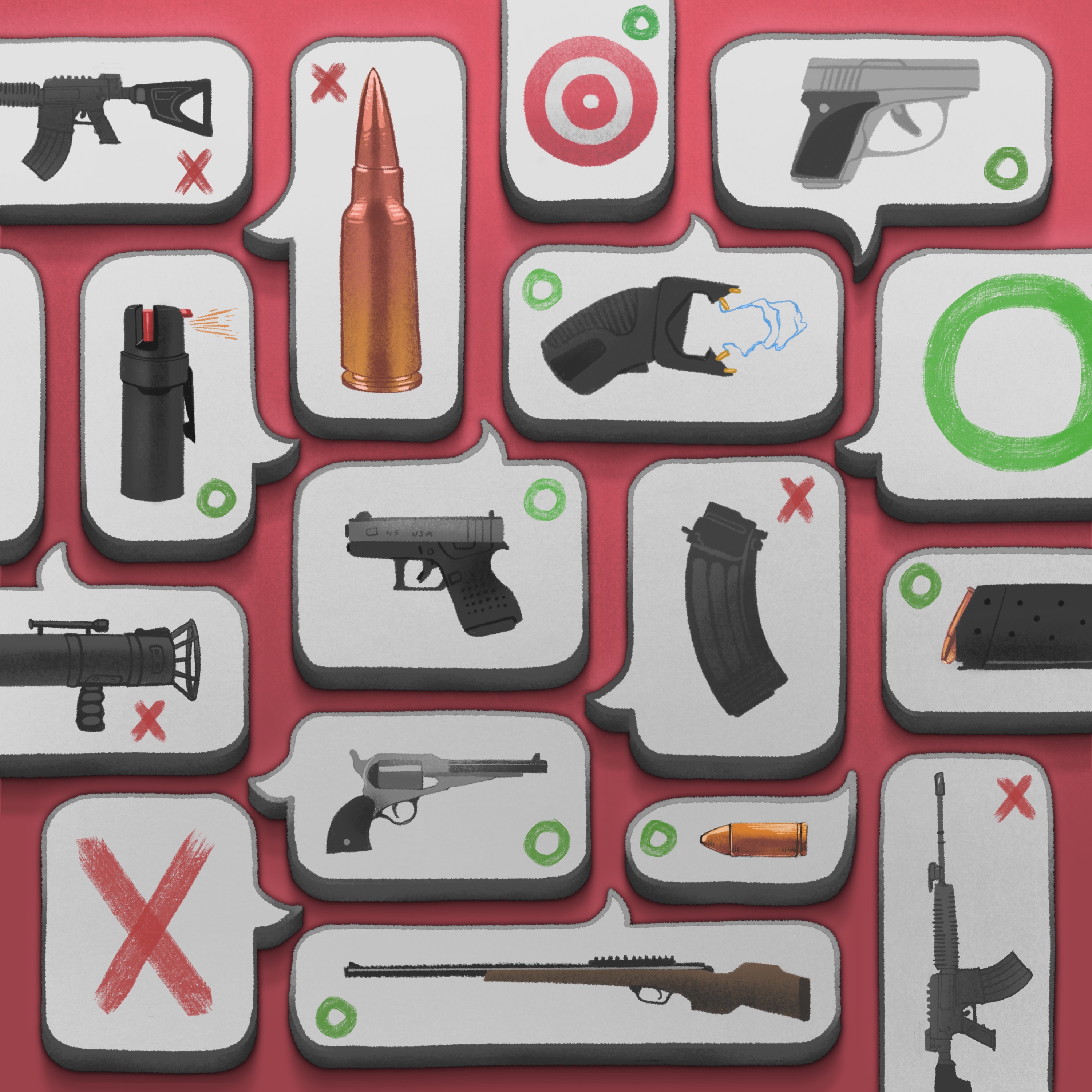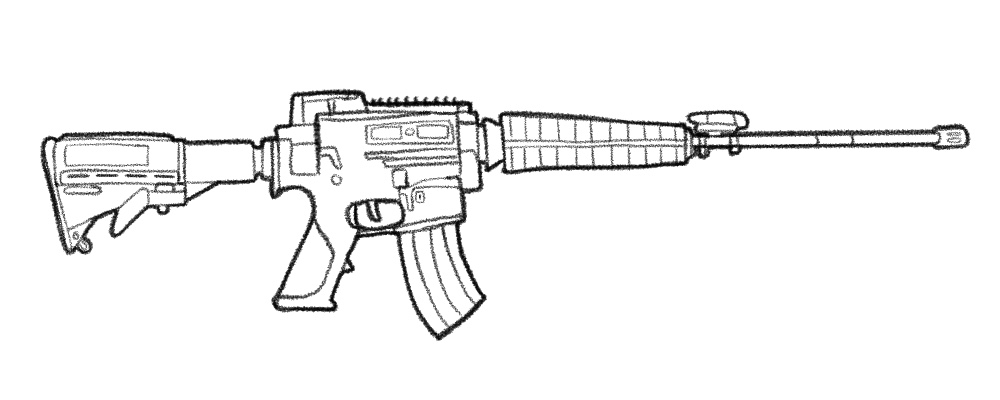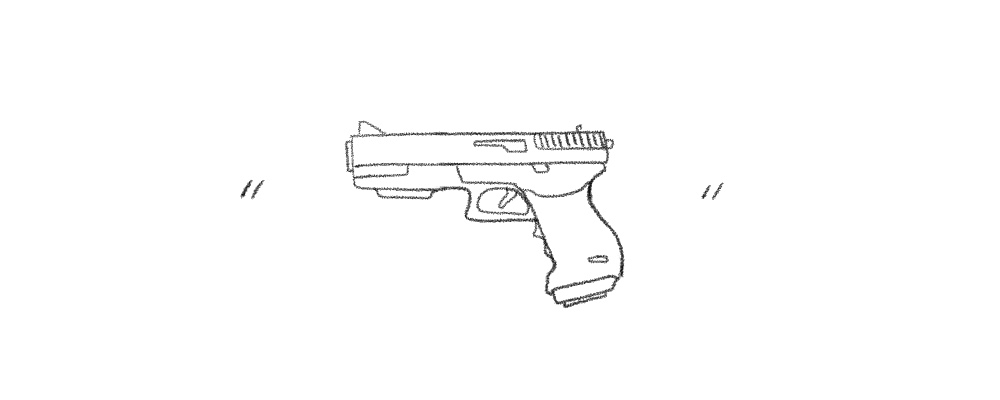
Why do we Keep Arguing About Gun Control?
Nobody can see eye to eye on the future of gun laws, is that a problem?
// 25 Oct 2017
When we talk about gun control, the flood gates open and we are bombarded with opinions from both sides of the political spectrum. Everyone has their two cents to put in, and everyone feels justified in whatever they feel is moral or right. Anecdotal evidence is spouted like a fountain, and both sides of the argument parrot whatever justification they received from friends or family that are “in the know”. Both sides of the polarizing argument are fighting for the protection of life, albiet in fundamentally different ways. Trying to make sense of motivations, applications, and effectiveness of proposed solutions is a monumental task. But cutting through the muck is exactly what needs to happen to fix the problem in the US.
The first barrier to a solution is the severe lack of data on gun related deaths. The National Rifle has been a prominent lobbyist in Washington, donating millions of dollars a year to conservative congressmen and other representatives. In 1996, Jay Dickey and the NRA lobbied successfully to prevent research money budgeted to the Center for Disease Control and Prevention from advocating or promoting gun control research. That has been in effect ever since, and the NRA shows no signs on letting up on that enforcement. As the country with the most guns in the world, we are cutting off our avenues for knowledge, accountability and progress in the pursuit of political interest. If the auto industry had lobbied nearly as much against seatbelts, then auto accidents would still be in the top ten leading causes of death like they were in the 80’s.
But let’s look at the numbers to try and get a sense of scale, because we need to know under what circumstances we are even arguing about. The CDC does keep track of mortality statistics, and they are revealing in terms of shear statistics. For 2014, the number of people killed by guns was ~11,000, excluding suicide with a firearm. That is roughly 60% of homicides in the US being commited with a firearm. That number is admittedly higher than a large percentage of developed countries, but how devestating is it really? Is gun control even a large scale problem?

Every year, 600,000 people die of heart disease, and about 300,000 of those deaths are directly attributed to obesity. Car accidents are attributed to 37,000 deaths yearly. Suicide accounts for 43,000 deaths, and has risen into the top ten causes of death in the US. 60% of suicides are successfully carried out with a firearm, which means that even at conservative estimates, that is double the homicide rate when we look at the gun problem as a whole.
So, you have a 3000% higher chance of dying due to being obese, than you do of being murdered with a gun. Car accidents are still a 3x deadlier instrument than a firearm, yet we still catch ourselves texting and driving. For the NRA as well as a large population of gun owners, it just doesn’t seem to be a pressing issue. Guns are a tool for self defense, also used for hunting and being self sustaining. Guns have been part of our history from the very beginning. Banning guns would be disasterous for a country so hard-coded to preserve the right to bear arms. We have established how large the problem is in terms of mortality rates, but people die by lots of different means. What makes gun control different than say, diabetes? Why are gun laws still so polarizing?
For one thing, we don’t view diabetes as having malicious intent. It is just an impartial disease. But when we look at a shooting, we see a reflection of humanities’ worst qualities. We want to come to grips with people making bad decisions, and we do that by picking sides. But we can’t mitigate the numbers, we can’t escape the culture that we have fostered and grown. We as a country have the most mass shooting events of any developed country. By a long shot. For those incidents, any allowance is too much. This isn’t something that just happened overnight. We caused this, we are the only country where this happens to this degree. The problem is only growing larger, with larger and more deadly events happening every year. If not held in check, the problem will only continue to grow. For me, that in itself is enough to spur a desire for change, and to at least research the problem without the influence of NRA lobbying. If it can prevent another Sandy Hook, Pulse Nightclub, or Mandalay Bay shooting, then it will be time and money well spent. But we can’t get anywhere while looking at each event as nothing more than a shame and a tragedy.
In the hands of the wrong person, guns can be casually lethal just as easily as they can be a tool for protection or self-preservation.
An equally concerning issue at stake is the frightening suicide rate in the United States. Any given firearm is twice as likely to kill the person holding it, rather than anyone else. In a country with the equivalant of one gun per person, access to firearms as a means of suicide is a much larger problem than homicide, mass shootings, or terrorist attacks. While guns are not directly responsible for an individual’s choice to commit suicide, firearms are without a doubt the most effective method, and with easy access comes a higher success rate. So we find ourselves in the very grey area of trying to balance intentions with the method, in trying to prevent the suicide rate from climbing.
Firearms are dangerous, that’s no secret. People are irresponsible, and there are plenty of deaths due to negligence, or improper safety with a gun. Firearms are responsible for 75,000 non-fatal injuries per year. In the hands of the wrong person, guns can be casually lethal just as easily as they can be a tool for protection or self-preservation. We need to be extra careful with the ease of access that we have to firearms, because they are everywhere. I don’t think that the amount of guns in the United States will ever go down. Our country was founded on a revolution held at the tip of a musket. So it’s clear, that just as the auto industry before this, we need to take matters into our hands as a country to better determine how those guns are used, which is a problem often indirect to the guns themselves. Even if we look at the numbers and rationalize that it isn’t as big of a problem as other causes of death or injury, we have to take an honest look at what we are doing to combat the problem for what it is. What I see is a country that is complacent in letting lobbyists dictate policy despite limited access to valuable research. I see grasping at straws and weak arguments as a result of a lack of sufficient data on gun violence. I see a nation divided in two over an issue that should be transcending red or blue boundaries over the preservation of human life. I see a lot of people more than willing to say, “Oh, it’s not that bad”. That in itself is a travesty.
Guns could be safer. There could be more provisions in place to prevent known violent offenders from having access to more lethal weapons. We need better care for those with mental illness, giving people better options than suicide to deal with their grief or pain. There are laws waiting in the wings to help make firearms safer without outright bans or barriers to purchase. I’ll leave the specifics to people much more qualified than me, but I keep my finger on the pulse of this reactive issue, looking for opportunities to act in making life safer. But there is no reason not to act at all, other than the outdated opinions and morals of a powerful and manipulative few. To sit idly by and say that 30,000 is an acceptable amount of yearly deaths by gun violence is to be in part responsible for them. To acknowledge that there is a gun problem, then to say that we don’t need to do anything about it, is preposterous.
As much as the media tries to blow it out of proportion in both directions, I strongly believe there is an underlying issue to be addressed. But, I also recognize that guns need to have a place in our society, as a means of self defense and self-sufficiency. The happy silver lining is that all crime and violence has been in decline since the 90’s. We are slowly working towards a better world. But to expect the issues to work themselves out is naive. What we need now more than anything is education, not political agendas. We should all be doing our best to truly take in both sides, to understand their points, reasons, and justifications. We need much more extensive research on guns, homicide and suicide. That’s where the work can begin to form a more successful dialogue in addressing the problem of gun violence, and identifying solutions that fill the needs of both political parties and ideologies. I truly hope that 50 years from now, we can look back at this decade as the time we finally decided to take action together, whatever that action may be. But it won’t be until we can all get off our high horses and listen to each other.
